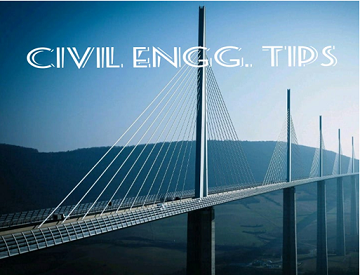The entire railway system was earlier divided into nine zonal railways. To increase efficiency, the Railway Ministry decided to line up seven new railway zones, namely, North Western Railway at Jaipur, East Central Railway at Hajipur, East Coast Railway at Bhubaneswar, North Central Railway at Allahabad, South Western Railway at Bangalore, West Central Railway at Jabalpur, and South East Central Railway at Bilaspur. All the new railway zones are fully functional from 1 April 2003.
Presently, Indian Railways is divided into 17 zones,
each having different territorial jurisdictions which vary from 2300 to 7000
route km. The route kilometers of various zonal railways are given in below
Table
Sl. No.
|
Zone
|
Headquarter
|
1
|
Central
|
Mumbai
|
2
|
Eastern Railway
|
Kolkata
|
3
|
Northern railway
|
Delhi
|
4
|
Southern railway
|
Chennai
|
5
|
Western Railway
|
Mumbai(Church Gate)
|
6
|
South Central zone
|
Secunderabad
|
7
|
East Coast
|
Bhubaneshwar
|
8
|
East central
|
Haajipur
|
9
|
North East frontier
|
Gauhathi
|
10
|
North central
|
Allahabad
|
11
|
North East Railway
|
Gorakhpur
|
12
|
North Western Railway
|
Jaipur
|
13
|
West Central Railway
|
Jabalpur
|
14
|
South East
|
Kolkata
|
15
|
South east central
|
Bilaspur
|
16
|
South western railway
|
Hubballi
|
17
|
Konkan getting
|
Belapur, Navi Mumbai
|
Classification
of Broad Gauge Routes:
All the broad gauge (BG) routes of Indian Railways have been classified into five different groups based on speed criteria as given below.
Group A
lines
These
lines are meant for a sanctioned speed of 160 km/h:
·
New Delhi to Howrah by Rajdhani route
·
New Delhi to Mumbai Central by Frontier
Mail/Rajdhani route
·
New Delhi to Chennai Central by Grand Trunk
route
·
Howrah to Mumbai VT via Nagpur
Group B
lines
These
lines are meant for a sanctioned speed of 130 km/h:
·
Allahabad–Itarsi–Bhusaval
·
Kalyan–Wadi Raichur–Madras
·
Kharagpur–Waltair–Vijayawada
·
Wadi–Secunderabad–Kazipet
·
Howrah–Bandel–Burdwan–Barharwa over
Farakka–Malda town
·
Barsoi–New Jalpaiguri
·
Sitarampur–Kiul–Patna–Mughalsarai
·
Kiul–Sahibganj–Barharwa
·
Delhi–Ambala Cantt–Kalka
·
Ambala Cantt–Ludhiana–Pathankot
·
Ambala
Cantt–Moradabad–Lucknow–Paratapgarh–Mughalsarai
·
Arkonam–Erode–Coimbatore
·
Vadodara–Ahemdabad
·
Jalapet–Bangalore
Group C
lines
These
lines are meant for suburban sections of Mumbai, Kolkata, and Delhi.
Group D
and D Spl lines
These
lines are meant for sections where the maximum sanctioned speed is 100 km/h.
Group E
and E Spl lines
These
lines are meant for other sections and branch lines.
D Spl and E Spl routes: Based on the importance of routes, it
has been decided that few selected routes presently falling under D and E
routes will be classified as D special and E special routes. This has been done
for the purpose of track renewal and priority allotment of funds. The track
standards for these routes will be 60-kg 90 ultimate tensile strength (UTS)
rails and prestressed concrete (PSC) sleepers with sleeper density of 1660 per
km.
Classification
of Meter Gauge Routes:
Depending upon the importance of
routes, traffic carried, and maximum permissible speed, the metre gauge (MG)
tracks of Indian Railways were earlier classified into three main categories,
namely, trunk routes, main lines, and branch lines. These track standards have
since been revised and now the MG routes have been classified as Q, R1, R2, R3,
and S routes as discussed below.
Q routes: Routes
with a maximum permissible speed of more than 75 kmph. The traffic density is
generally more than 2.5 GMT [gross million tonne(s) per km/annum].
R routes: Routes with a speed potential of 75 kmph and a
traffic density of more than 1.5 GMT. R routes have further been classified
into three categories depending upon the volume of traffic.
Various system of railway:- R1—traffic density more than 5 GMT
- R2—traffic density between 2.5 and 5 GMT
- R3—traffic density between 1.5 and 2.5 GMT
- Surface railway: The railways provided over the ground surface are known as surface railways.
- Elevated railway: The railways provided at higher or elevated portion, above the ground surface are called elevated railways. In this system a continuous viaduct supported on piers, columns etc. is constructed and the track is carried on its steel deck.
- Underground railway: The railways provided just below the ground level is known as underground railways.
- Tube railway: The railways provided underground at a greater depth of about 18m or more upto 52m are called tube railway.









